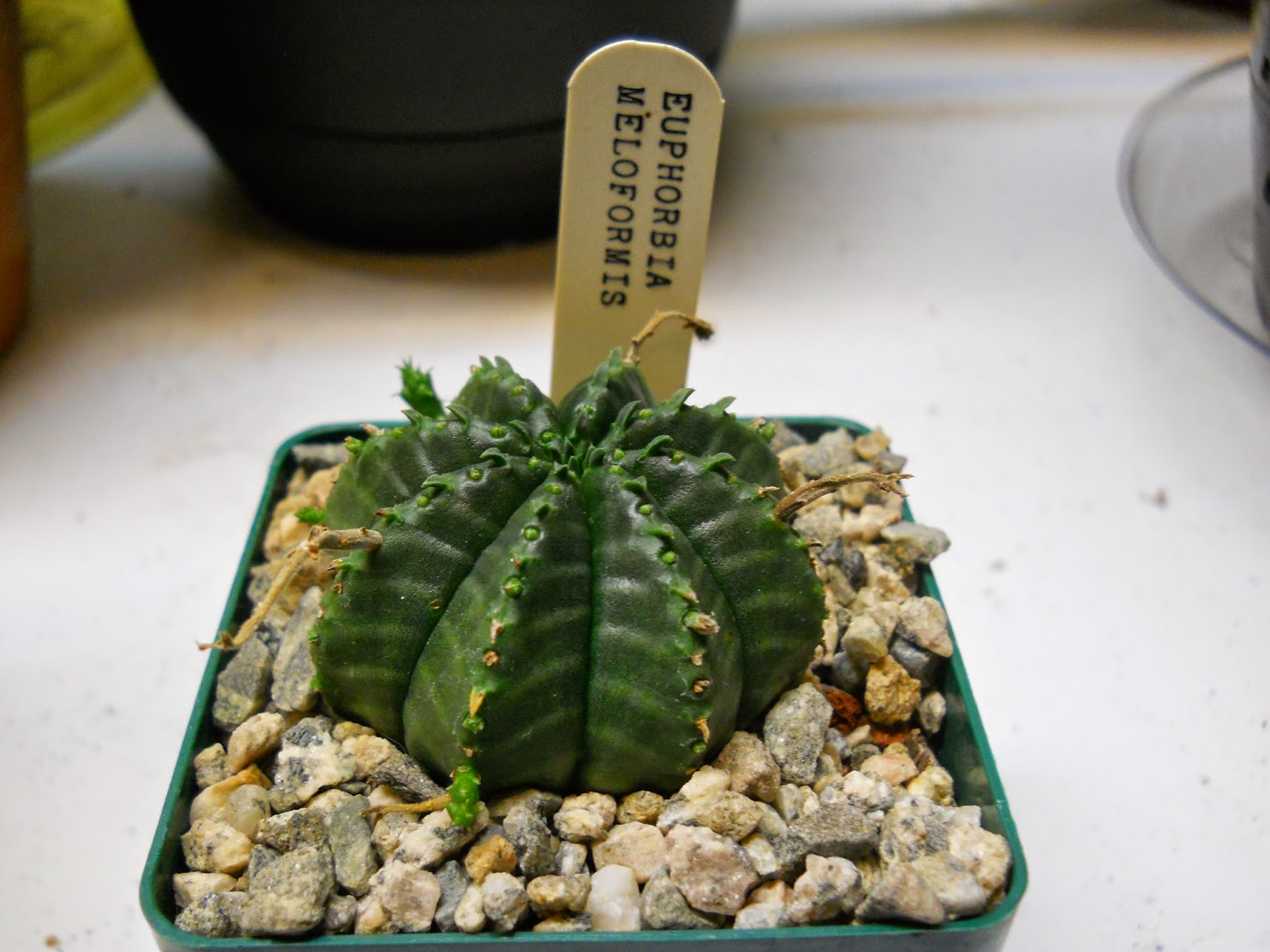Yikes, it's been almost two weeks since I posted! I started my thesis this past week. It's a lot of work and I'm still going through all of my references before getting to the meat of the thesis. But it's officially started and if all goes well, I will graduate in May! Then I'll have to change the title of this blog because I won't be in graduate school anymore. Anyway, this time I'll show off my Euphorbias!
This is Euphorbia anoplia. I don't know much about this species. I bought it just because I thought it looked cool with the way it twists as it grows. 
Now this guy is Euphorbia meloformis. It's pretty neat, striped like that. It also makes these flower stalks that look kind of fat. I don't have a picture of those. In fact, there's one on this plant right now and I'm not sure if it's just a flower stalk or a baby plant. I didn't think these were self-fertile so I'm leaning towards flower stalk.
This is Euphorbia milii. My variety blooms yellow, as you can see, but the traditional variety has red blooms.
Here's the whole plant. Euphorbia milii is known as Crown of Thorns, and traditionally is considered to be the plant that the crown of thorns Jesus wore during His crucifixion was made of.
This is the first Euphorbia I ever bought! It's Euphorbia obesa, the Baseball plant! It is round and smooth, with that nice striping on the sides. You can see mine is flowering. Mine flowers year-round, but it's not self-fertile so they never make babies.
Here's the top-down view of Euphorbia obesa. It's so nice and symmetrical!
Lastly, this is Euphorbia trigona var. rubra. It's a bit hard to tell from this photo, but this plant is mostly red! It grows those leaves and then they fall off. It's a weird plant but very, very pretty.















